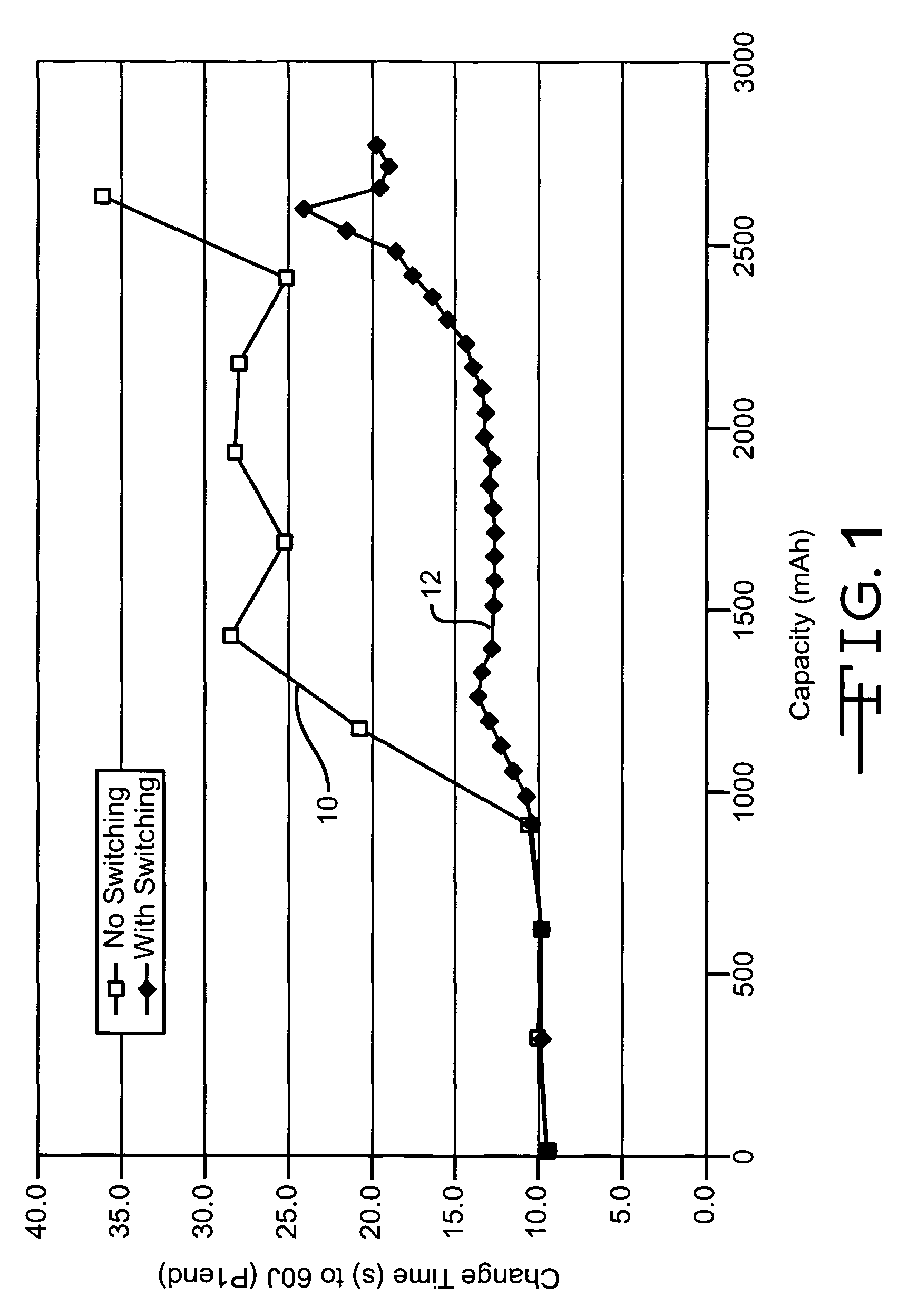Discharge methodologies for lithium/silver vanadium oxide cells to manage voltage delay and permanent RDC growth region
a technology of lithium vanadium oxide and discharge voltage, applied in the field of alkali metal electrochemical cells, can solve the problems of reducing discharge voltage, limiting effectiveness and even proper functioning, and voltage delay, so as to eliminate voltage delay and rdc growth, and preserve charging efficiency.
- Summary
- Abstract
- Description
- Claims
- Application Information
AI Technical Summary
Benefits of technology
Problems solved by technology
Method used
Image
Examples
example i
[0039]FIG. 1 is a graph drawn from the average discharge characterization results of two Li / SVO cell groups, each group having five cells of similar construction and energy density. The cells were periodically discharged at 50° C. under a 16.5 kΩ load with superimposed pulse trains applied every 63 days. The pulse trains consisted of two 2.5 amp, 10-second pulses with 15 seconds rest between each pulse. This type of discharge is termed 24 month accelerated discharge data (24MADD), which simulates 60MADD at 37° C. with pulse intervals of 154 days. The cells used to construct curve 10 were subjected to this protocol throughout the entire test. However, the cells used to construct curve 12 were switched to a more rapid discharge protocol after the fourth pulse train. Then, they were pulse discharged every 14 days until the end of the test.
[0040]It can be seen that in the case of the cells of curve 10, the charge time to 60 joules at pulse 1 end significantly increased after about 900 m...
PUM
| Property | Measurement | Unit |
|---|---|---|
| current densities | aaaaa | aaaaa |
| current densities | aaaaa | aaaaa |
| electrical current | aaaaa | aaaaa |
Abstract
Description
Claims
Application Information
 Login to View More
Login to View More - R&D
- Intellectual Property
- Life Sciences
- Materials
- Tech Scout
- Unparalleled Data Quality
- Higher Quality Content
- 60% Fewer Hallucinations
Browse by: Latest US Patents, China's latest patents, Technical Efficacy Thesaurus, Application Domain, Technology Topic, Popular Technical Reports.
© 2025 PatSnap. All rights reserved.Legal|Privacy policy|Modern Slavery Act Transparency Statement|Sitemap|About US| Contact US: help@patsnap.com

